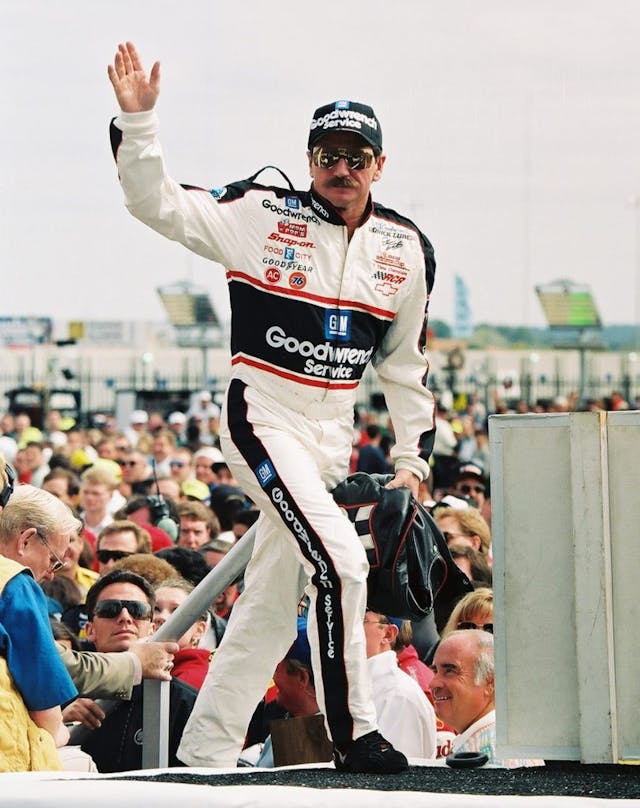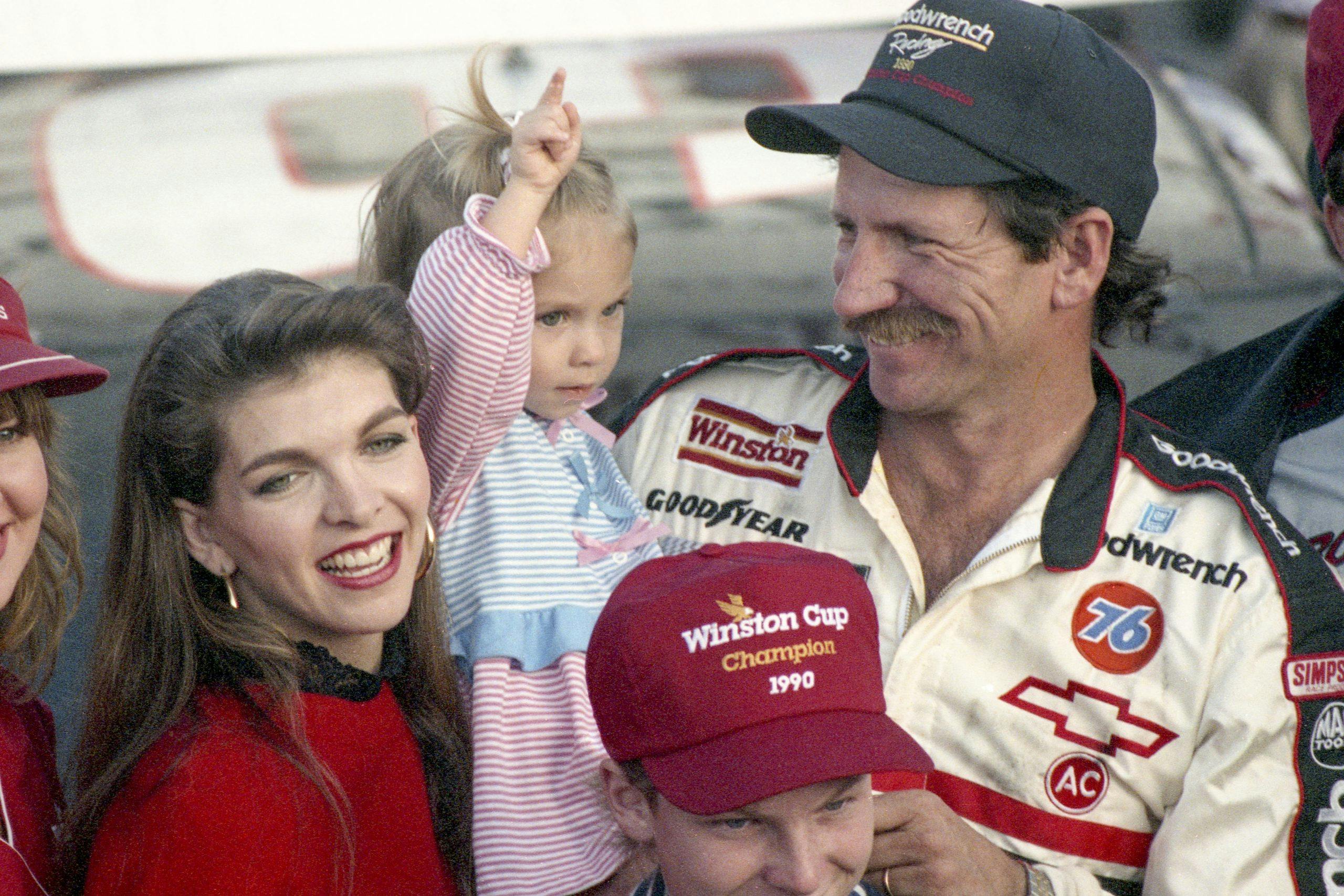Media | Articles
Remembering Dale Earnhardt, 20 years later
On February 18, 2001, during the last lap of the Daytona 500, Dale Earnhardt was involved in a crash that sent him head-on into the outside retaining wall. NASCAR’s most prolific driver died upon impact, suffering from a basilar skull fracture. The racing world mourned.
I was 10 years old when Dale Earnhardt died, and despite having never met the man, I cried like I’d lost a friend. My bedroom was full of t-shirts, toy cars, and posters—all with the black #3 stock car emblazoned on them. As Dale finished the closing laps of the 1998 Daytona 500 (his only 500 triumph), I watched nervously and cheered when he took the win. He was my idol.
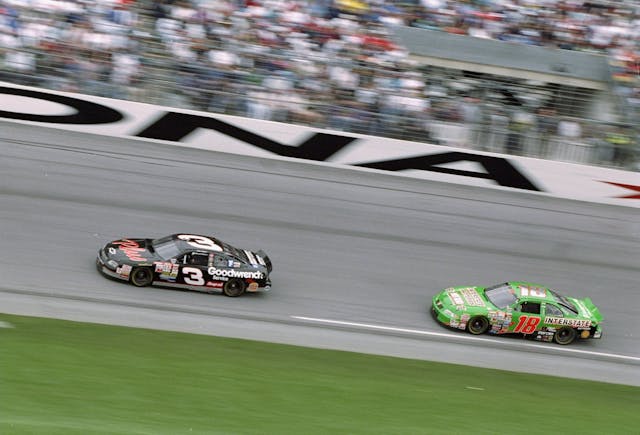
Earnhardt was a blue-collar, deer-hunting, bass-fishing, cowboy boot-wearing, self-made celebrity, and he was loved by many. Born April 29, 1951 in Kannapolis, North Carolina, Ralph Dale Earnhardt was the son of southern stock car great Ralph Earnhardt. Since his first race in 1970, Dale Earnhardt scraped, gouged, and roughed up anyone who stood in the way of his path to success, but did so with an uncanny style, grace, and charm. He was “the Intimidator,” but he wasn’t the villain. Like a superhero with an attitude, he wore black as he built an empire, winning at NASCAR’s highest level. At the time of his passing, Earnhardt had earned 76 victories and a record-tying seven championships in NASCAR’s Cup Series.
Earnhardt battled for victory in the closing laps of the 2001 Daytona 500, aiming to capture a second win at the “Great American Race.” For years, the 2.5-mile tri-oval was the Intimidator’s personal playground. The type of pack racing endemic to Daytona and Talladega fit Earnhardt’s aggressive driving style, and he was an ace at drafting. Many foiled competitors claimed he could somehow “see the air.”
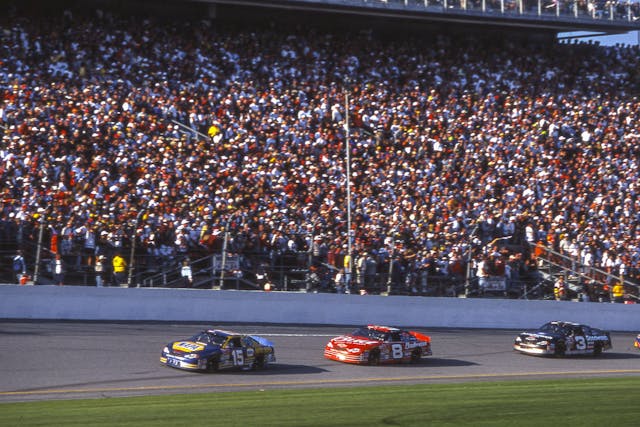
In the final few laps, Earnhardt took on a different role—one rarely witnessed. He was in third place, effectively playing defense for the two cars running 1-2, which he also owned. The leader was close friend Michael Waltrip, and in second place was Earnhardt’s son Dale Jr., meaning the trio were positioned to give Dale Earnhardt Inc. the team’s first-ever Daytona 500 victory.
Marketplace
Buy and sell classics with confidence
Heading into the third turn on the last lap, while holding other opponents at bay, Earnhardt tangled with another driver. The skirmish sent the #3 car up Daytona’s 31-degree banking and into the concrete wall. As Michael Waltrip crossed the finish line to win the race, Earnhardt’s car came to rest on the infield grass.
Earnhardt was cut from the car and rushed to nearby Halifax Medical Center. NASCAR president Mike Helton informed the world in a press conference later that evening. “This is understandably the toughest announcement I’ve ever had to make. We’ve lost Dale Earnhardt.” In the days and nights following the 2001 Daytona 500, there were numerous memorials and candlelight vigils for Earnhardt in Kannapolis and the surrounding Charlotte area. The stock car superstar’s death made national news. NASCAR’s greatest hero was gone.
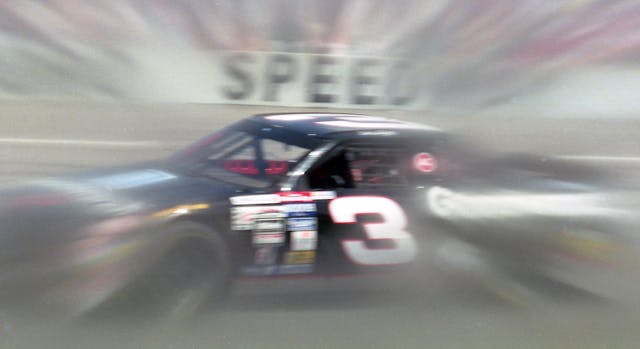
Earnhardt’s passing was the fourth on-track death in a nine-month period among NASCAR’s three national series. In May 2000, Busch Series driver Adam Petty, the grandson of Richard Petty, was killed in a practice crash at New Hampshire International Speedway. Two months later, Winston Cup driver Kenny Irwin also was killed at the same track. That fall, NASCAR truck series driver Tony Roper was killed at Texas Motor Speedway.
Despite the three deaths in 2000, talks of safety reform were lacking in concrete follow-up action. “When it was just another driver, it was easy for the driver group to go ‘Hey, that’s part of racing.’ said Earnhardt’s son Dale Jr, in an interview for ESPN’s Intimidator: The Lasting Legacy of Dale Earnhardt. “But when it was the Man, you went ‘Dang, if it can happen to him, it can happen to me.’” The documentary suggests that Earnhardt’s greatest legacy is the list of safety features implemented in motorsports in the wake of his death.
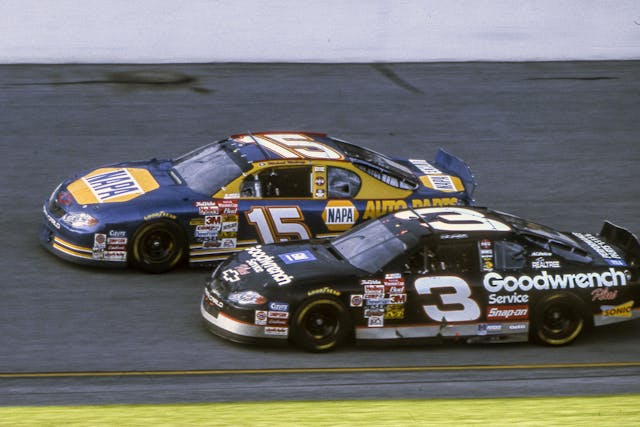
Sadly, it wasn’t the first time in history that a catastrophic accident was what it took to kick-start meaningful, comprehensive change in motorsports safety. Take the death of Formula 1 great Ayrton Senna, for example. Following the weekend where Roland Ratzenberger and Senna perished in separate incidents at the 1994 San Marino Grand Prix, retired driver Niki Lauda reformed the Grand Prix Drivers’ Association and pressed the FIA to improve the overall safety of Formula 1, resulting in the implementation of numerous safety initiatives in the following races.
Earnhardt’s death had similar impact for NASCAR nation. In a recent interview with ESPN’s Ryan McGee, NASCAR President Steve O’Donnell spoke of the sea change. “In the mid-to-late 1990s, there were a lot of incidents, a lot of trepidation. Safety was a tough conversation, and it became something that you almost didn’t want to talk about it. It wasn’t cool to talk about it,” said O’Donnell. “Post-Dale Earnhardt’s passing, that conversation shifted. Everybody was all-in on, ‘How do we fix this? We have to fix it.’”

One rapidly adopted solution was a head and neck restraint, or a HANS device. The safety gear rested on a driver’s shoulder and clipped into hard points on the back of their helmet. During impact the restraint minimizes the head’s movement and exponentially cut down on the threat of a basilar skull fracture where the head and neck meet. As reported by McGee, “In the week following Dale Earnhardt’s death, nearly 250 Hans Devices were purchased, as many devices as were purchased throughout the decade of the Nineties.” NASCAR pressed on, racing the next weekend in Rockingham, North Carolina. Nearly every driver in the field wore some type of restraint. On the third lap of the race, fans observed a moment of silence, apart from the 43 stock cars roaring around the track, as they held three fingers in the air. The tradition continued for the rest of the season.
In addition to the mandated HANS devices, foam-stuffed SAFER barriers lining track walls and bolstered roll cages top the long list of safety features NASCAR implemented over the past two decades. Since Dale Earnhardt’s passing there have been zero fatalities in NASCAR’s three national series.
Dale Earnhardt’s legacy is like two sides of a coin, marked by both greatness and tragedy. His larger-than-life status, fueled by his success on and off the track, made his loss all the more unfathomable. His absence from the lives of motorsports fans demanded action to honor his memory and protect competitors. Twenty years on, NASCAR has dramatically changed, but adoration for the Intimidator endures. Fans the world over, like me, will be be holding three fingers in the air today, in remembrance of their hero.
